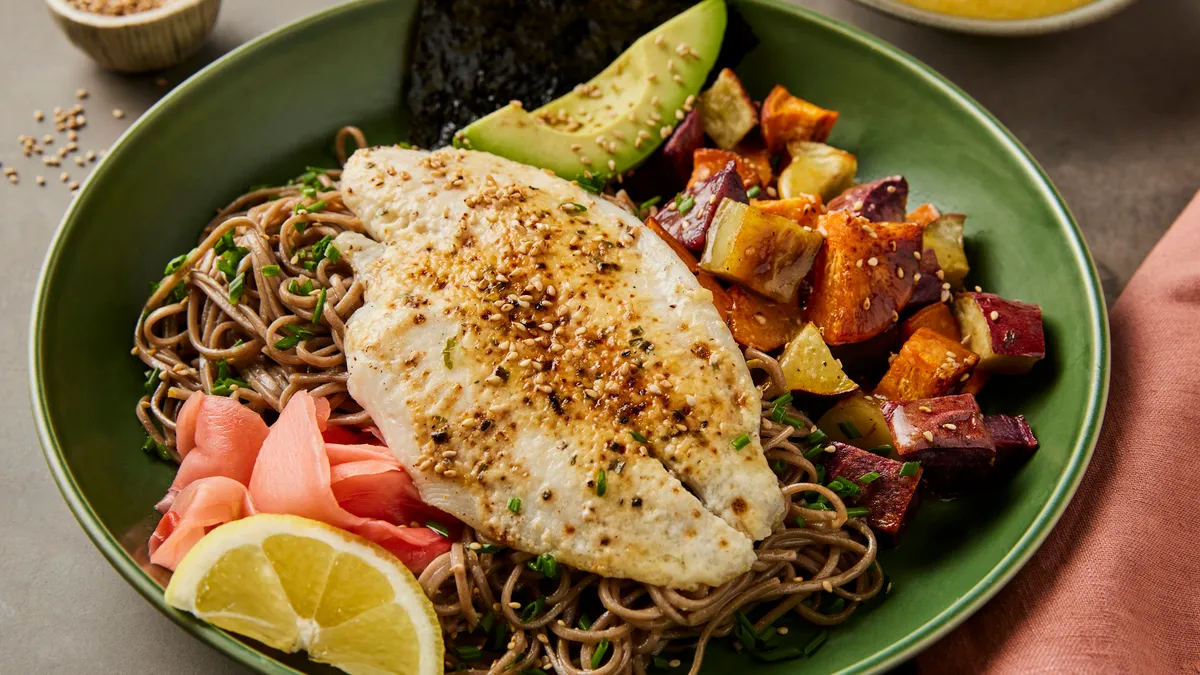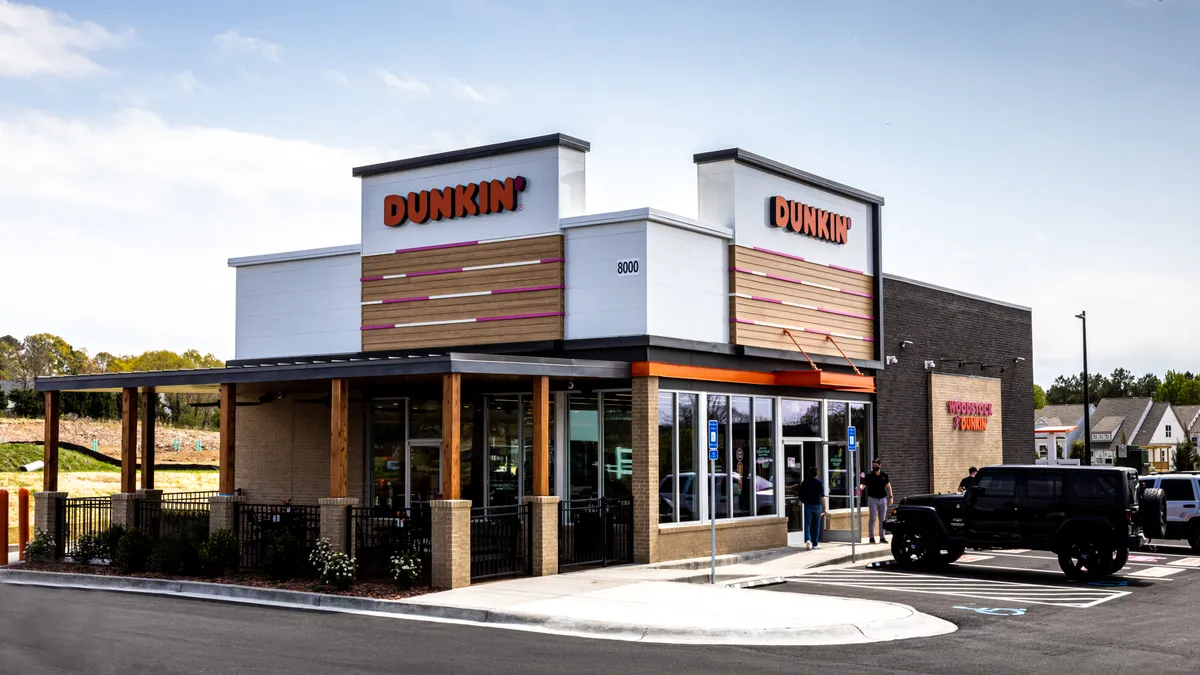Bowls featuring Wild Alaska seafood can help restaurant operators capitalize on one of the hottest menu trends of the last several years.
The ability to customize bowls, their generally healthful properties, and their suitability for off-premises dining has helped sustain their popularity. They also allow operators the flexibility to easily substitute ingredients and to create items that meet demands for globally-inspired recipes. In addition, seafood is one of the dishes consumers prefer to order in restaurants.
Given consumers' renewed focus on health and immunity, Alaska seafood is the perfect protein for restaurant operators to feature in their bowl dishes. In fact, foods that boost immunity were identified by the National Restaurant Association as a top trend for 2022.
When combined with a variety of other ingredients, from grains and greens to pickled vegetables, herbs, spices, and house-made sauces and dressings, seafood bowls provide options for consumers that are both healthy and flavorful.
Bowls are simple, less formal, and more convenient vessels to eat from, especially in quick-service and fast-casual restaurants, but also work well conceptually in full service, said Keith Brunell, chef, and director of food and beverage at Nordstrom, who created a menu of flavorful and globally inspired Alaska Seafood Bowl recipes for the Alaska Seafood Marketing Institute.
Each of the creations features authentic, house-made sauces and ingredients that can be substituted or prepared in different ways based on consumer or operator preferences.
"Customization makes it a win for the customer because they can modify or add a wide range of proteins or premium ingredients — in this instance a variety of Alaska seafood options and sauce preparations," Brunell said.
The Alaska Seafood Bowls
Following are some examples of the innovative dishes Brunell created, highlighting various ways operators can feature Wild Alaska seafood on their menus:
- Crispy Wild Alaska Pollock Spicy Hanoi Noodle Bowl —Brunell described this Vietnamese-inspired dish as a "super refreshing flavor experience" that is built around a base of turmeric and fresh dill. The sauce, made with chilies, garlic, ginger, fish sauce, sugar, fresh dill, and mayo, is tossed with chilled rice noodles, and the fish is lightly dusted with a turmeric rice flour blend for color, flavor, and crunch when the fish is flash-fried. This dish works with many different species of fish from Alaska, he said.
- Caramelized Pineapple Adobo Wild Alaska Rockfish and Gingered Brown Rice Bowl — Brunell said this recipe, which showcases Filipino cuisine, has "elements of savory-sweet heat," with garlic, ginger, honey, soy, and aromatics balanced with the base of gingered brown rice. It pairs well with all Alaska seafood options, he said.
- Char-grilled Wild Alaska Salmon Rice Bowl with Peanut Tamarind Sauce — In addition to salmon, the Rice Bowl with Peanut Tamarind Sauce also works well with Wild Alaska cod or halibut, and can be spiced up with a chili garlic sauce or sambal oelek, Brunell suggested.
- Spicy Wild Alaska Surimi Seafood Shishito Rice Bowl — This Japanese-influenced bowl features a yuzu ginger dressing, charred shishito peppers and a miso sesame aioli. Wild Alaska salmon can also be used for a quick tossed salad, served hot or cold.
- Smoky Harissa Baked Wild Alaska Cod Bulgur Bowl — With a recipe featuring Mediterranean flavors from smoky harissa aioli, this dish can also be made with couscous instead of bulgur wheat, and can also feature Alaska pollock, salmon or halibut.
- Miso and Yuzu Wild Alaska Sole Soba Noodle Bowl — Another Japanese-inspired creation, the Miso and Yuzu Wild Alaska Sole Soba Noodle Bowl includes a yuzu ginger dressing and a miso sesame aioli, with soba noodles that can be served hot or cold.
Keys to Success with Bowls
Allowing customers to customize their orders and ensuring that the products have a "health halo" from better-for-you ingredients are among the keys to success with bowls, Brunell said.
These Alaska Seafood Bowls get their volume from noodles, grains, mixed greens, vegetables, and fruits, with the premium protein in smaller portions, complemented by "bold and bright" sauces, he said.
The menu should be developed with four or five base items to choose from, and the same mixed greens to build the bottom of the bowl.
"The high-quality seafood should be wide-ranging, portioned appropriately, and able to hold up to different, quick-cooking applications," Brunell said.
"Overall, have fun, keep it simple and be authentic to your mission and menu goals," Brunell said.
Promoting the Benefits of Alaska Seafood
High-quality Alaska seafood not only provides an immunity boost, it is also sustainably harvested, and certified sustainable by Alaska's Responsible Fisheries Management (RFM) and the Marine Stewardship Council (MSC) programs.
Operators should draw attention to the "wild, sustainable and natural" attributes of Alaska seafood, along with their nutritional value, said Brunell.
"This can be done using simple, specific collateral materials, QR codes, but it really comes down to the server, cashier, and salesperson," he said, adding that the Alaska Seafood Marketing Institute (ASMI) also has resources available on its website that operators can use.
Bowls made with Alaska seafood provide flavorful, healthy meal solutions, and offer a point of differentiation from restaurant concepts offering bowls made using other proteins.
"The story is that the quality and wide range of Alaska seafood acts as a canvas to introduce unique and more diverse flavor profiles, allowing the rich, decadent fish to be the hero," Brunell said.
For more recipe ideas and inspiration, visit www.alaskaseafood.org/foodservice/










